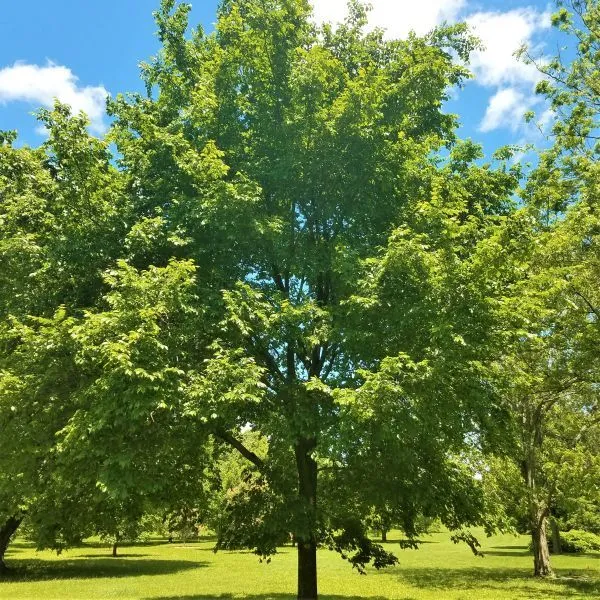The American Elm (Ulmus americana) is a majestic deciduous tree native to eastern North America, known for its iconic vase-shaped crown and gracefully arching branches. It typically reaches heights of 60 to 80 feet, occasionally soaring even taller in optimal conditions. The bark is dark gray and deeply furrowed, providing a rugged aesthetic to mature specimens. The leaves are elliptical with serrated edges, turning a vibrant yellow in fall before dropping. American Elms produce inconspicuous flowers in early spring before the leaves emerge, followed by small, winged fruits known as samaras.
- Size: American Elms can grow quite large, reaching heights of 60 to 80 feet with a spread of 40 to 60 feet.
- Location: Plant in a location with full sun to partial shade and well-drained soil.
- Watering: Keep the soil consistently moist, especially during periods of drought.
- Pruning: Prune dead or diseased branches as needed, and prune for structural integrity when young to encourage a strong framework.
- Fertilization: Fertilize in early spring with a balanced fertilizer to promote healthy growth.
- Pest and Disease Control: Watch for pests such as elm leaf beetles and diseases like Dutch elm disease. Monitor for symptoms and treat promptly if detected.
- Mulching: Apply a layer of mulch around the base of the tree to retain moisture and suppress weeds.
- Support: Provide support for young trees in windy areas to prevent damage to the trunk and branches.
- Air Circulation: Ensure good air circulation around the tree to discourage fungal diseases.















